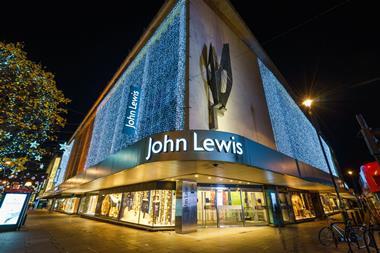Today’s consumers live complex lives. At every turn, they are bombarded with information and advice.
Today’s consumers live complex lives. At every turn, they are bombarded with information and advice. At times, they feel hassled and have to make decisions based on complicated sets of variables.
That’s what the consumer experiences, but is it what the consumer wants? Surely, buying decisions should be relatively straightforward. Indeed, isn’t it one of the fundamental precepts of retailing that, in the interest of the customer, we facilitate the selection and purchasing process?
Of course, in today’s fiercely competitive trading environment, consumers inevitably have to cope with an avalanche of persuasive commercial messages from disparate sources. Many such messages are, at best, binned or, at worst, actively resented.
Customers appreciate a clear-cut proposition, simply and transparently presented. Often in my experience, as retailers seek to gain and retain customer interest, less is more.
Now that does present challenges for a company like BrightHouse. Our existing business model was launched in 1994. It has several variables. In purchasing a product, a customer can opt to pay weekly or pay cash up front.
The customer can choose a range of service benefits on top of the core price, or they can opt for some or none of these. Therefore, we do have to work constantly to ensure our proposition is clear and readily understood.
But while having the right message is important, it’s the quality of delivery that builds positive reputations. My three golden rules for delivery are the three Cs - coherence, consistency, and completeness. The way in which these principles are applied will vary, but they are relevant for all retailers.
Coherence is about ensuring that the disparate elements of the customer proposition gel and sit in harmony together under the umbrella of the brand. Our customers benefit from understanding what our BrightHouse brand stands for, and should be comfortable in recommending us to their family and friends.
Consistency means delivering our messages in the same way across the different channels for communicating with customers. Retailers clearly understand the need for synergy across the mediums of TV and newspaper advertising, window and in-store posters and leaflets, product catalogues or websites. But another vital ingredient in the mix is effective and continuous training for store colleagues.
Completeness is significant. It is about recognising not only the potential lifetime value of a customer, but the value of customers as advocates of the brand. Transparency, reliable after-sales service, and the avoidance of nasty surprises should be part of the whole picture. Completing a sale should be the beginning of engagement with the customer, not its ending.
Since our model was established nearly 20 years ago, these principles have served us well and will continue to do so. But a fourth C - Complacency - is not an option. To thrive, retail businesses must constantly review their policies and practices. It is vital to meet the needs of today’s consumer, but also to anticipate the demands of the customer of tomorrow.
- Leo McKee is chief executive of BrightHouse


























No comments yet